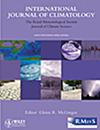Distinct Impacts of the Two Types of Summer ENSO on Tropical Cyclone Genesis in the Western North Pacific
Abstract
This study explores the relationship between summer-developed ENSOs and tropical cyclone (TC) genesis over the western North Pacific (WNP) in distinguishing two types of summer ENSOs with distinct developing evolutions: so-called ‘continuing ENSOs’ and ‘emerging ENSOs’. The summer equatorial Pacific sea surface temperature anomalies (SSTAs) during continuing ENSOs persist from the preceding winter, whereas emerging ENSOs feature a rapid decline in SSTAs from the preceding winter and newly develop from the following spring. The impact of summer ENSOs on WNP TC genesis is characterised by a shift in genesis location, as revealed in previous studies. The shift in genesis location is characterised by a zonal pattern with increased (decreased) TCs east (west) of 140° E in May to June (MJ) and a northwest–southeast dipole pattern with increased (decreased) TC genesis in the southeast (northwest) part of the WNP in July to September (JAS). The present study reveals that this impact of summer ENSOs is mainly contributed by emerging ENSOs, whereas the continuing type weakens ENSO's impact. During emerging ENSOs, more intense cyclonic anomalies over the central Pacific significantly intensify the monsoon trough east of 140° E, strengthening the impact of summer ENSOs on the location of TC genesis. The reduced vertical wind shear and enhanced absolute vorticity brought by the monsoon trough are important for the shift in TC genesis. The present study indicates that the classification of these two types of summer ENSOs with different temporal evolutions is a crucial factor in studying the impact of summer ENSOs on WNP TC activity.


 求助内容:
求助内容: 应助结果提醒方式:
应助结果提醒方式:


